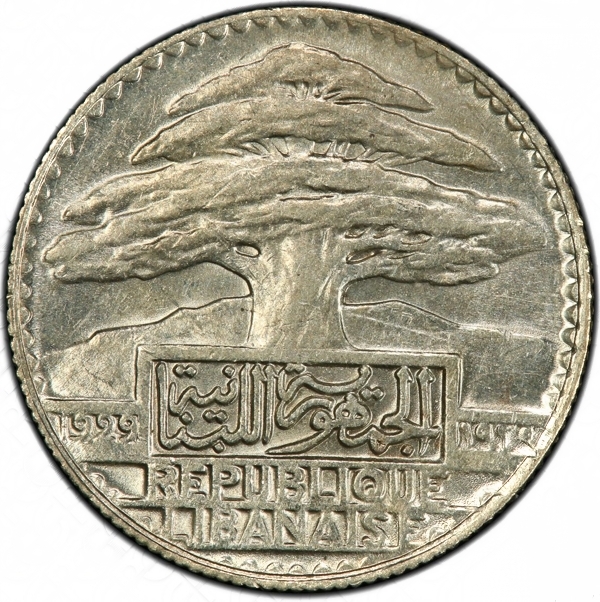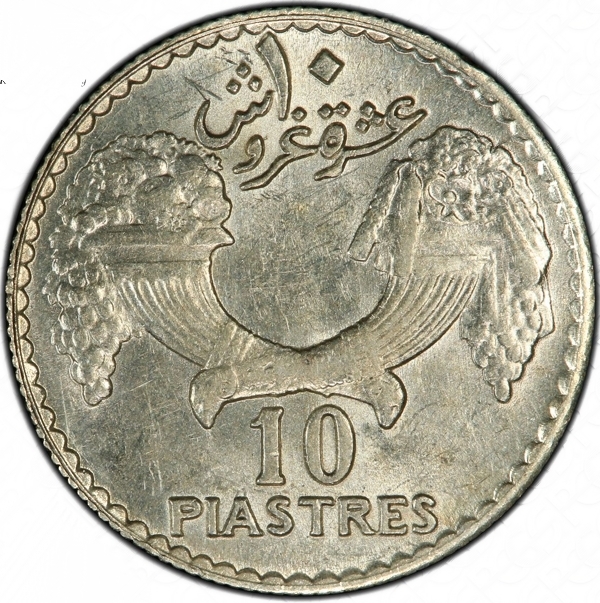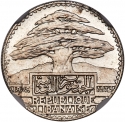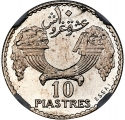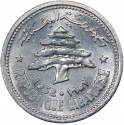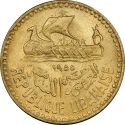You are about to finish your registration. Please check your mailbox (including spam folder). There should be a letter with a confirmation link. Check setting to make sure that your e-mail address is correct.
Send letter againDescription
The modern State of Lebanon has existed within its current borders since 1920, when Greater Lebanon was created under French and British mandate, resulting from the dismemberment of the Ottoman Empire at the end of World War I. Before this date, the designation “Lebanon” concerned a territory with vaguely defined borders, encompassing the mountain range of Mount Lebanon and its outskirts (mainly the Mediterranean coast and the plains of Bekaa and Akkar). The idea of an independent Lebanon, however, emerged during the end of the Mount Lebanon Emirate where Maronite clerics vowed for an independent nation.
Obverse

|
Depicts a Lebanon cedar above the country name inside a rectangle in Arabic and in French below, date on both sides in Arabic and French. الجمهورية اللبنانية |
|---|---|
Reverse

|
Depicts a mirrored cornucopia bound, containing pomegranates and other fruits, grape cluster hanging from the rim of each horn divided value in Arabic above and French below. ١٠ |
| Edge |
